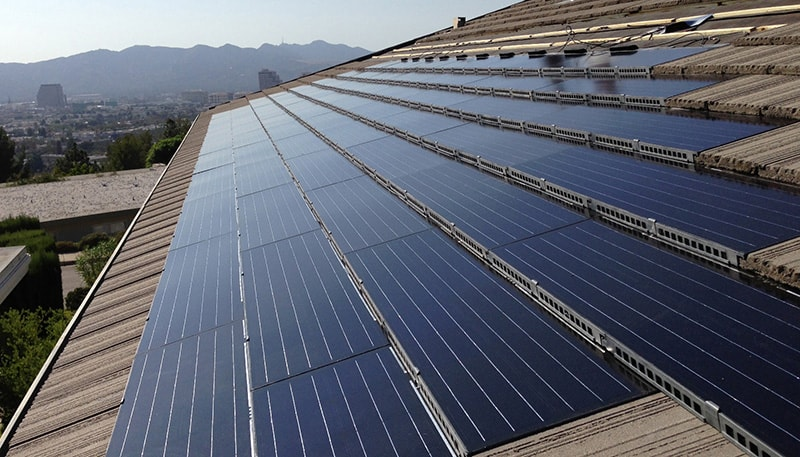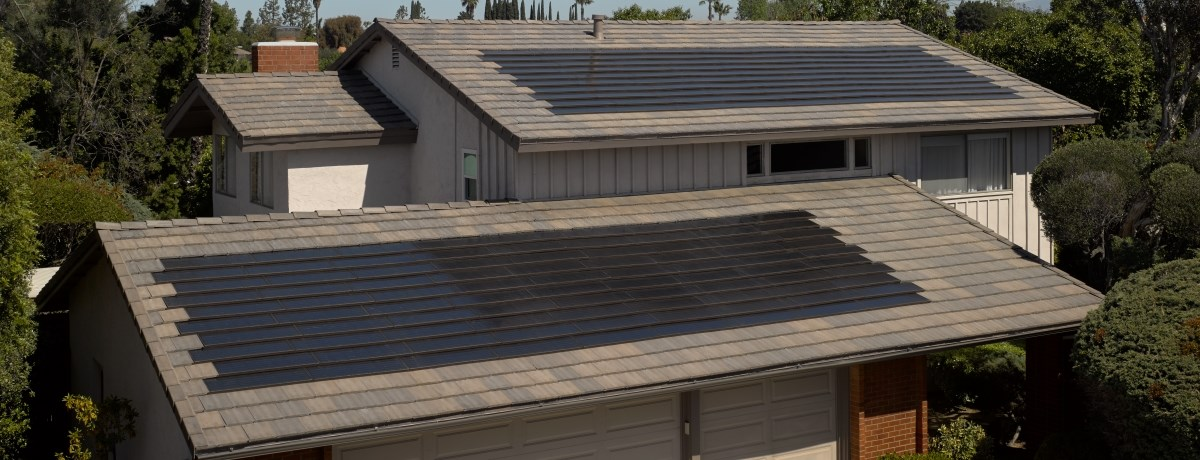
On October 28th, Elon Musk dazzled audiences with the unveiling of Tesla’s Solar Roof and updated Powerwall home energy storage system. Fans are already putting down a $500 deposit to get in line for the 13.5kWh battery.
Why did Tesla revamp their energy storage offering? The Powerwall 1 has had issues since its beginning. According to this Motley Fool article…
A year (after launching), the larger 10 kWh model of the Powerwall (1) vanished, and the 7 kWh model didn’t appear to be selling well to actual customers, and has already been undercut by competitors… How could a product with such hype be so disappointing so quickly?
The Powerwall 2 was launched in response to the mixed initial feedback of it’s predecessor, but you may have an option that’s even better. We’ve put together a side-by-side comparison of the Tesla Powerwall 2 with it’s biggest rival from across the Atlantic: German company Sonnen’s Eco battery storage system.
Let’s see how the specs match up…
Size Isn’t Everything
The Tesla Powerwall 2 can store 13.5kWh of energy, near the top end of the product line range of the Sonnen Eco which runs from 4kWh to 16kWh in 2kWh increments. Since the Powerwall 2 has not been released yet, many details on the product are either subject to change or not available yet. There currently are a lot of unknowns around who could install the Powerwall, and how the permitting will be structured. The Powerwall 2’s 13.5kWh size is also double the first Powerwall’s capacity, which may give insight as to why the 10kWh model was quietly discontinued only a year after launching. Many people who put a deposit down for the first Powerwall still haven’t had their orders fulfilled. Of those that have had their systems installed, one of the major complaints behind the Powerwall 1 was that it can get as loud as a garbage disposal, although Tesla said the loudest it could be is 58 decibels.
Since its founding in 2008, Sonnen has launched eight generations of energy storage devices. Their signature model for the residential market is the Eco, which starts at 4kWh and can be expanded in 2kWh increments up to 16kWh. Like the Powerwall 2, the Eco has an attractive modern exterior that mounts unobtrusively on the wall. Unlike Tesla, Sonnen also offers standardized permitting for installers to streamline the installation process. Sonnen’s manual also states that the maximum sound is less than 35 decibels.
Defining a “Fully-Integrated Solution”
All Sonnen and Tesla models are now available as fully-integrated systems, meaning the inverter, power components, and software are all included. This means no additional equipment is needed and the only additional cost is the labor and permitting to install the system.
On the software front, Tesla’s revealed very little behind Powerwall’s software, other than that you can monitor your energy usage in real-time. Sonnen’s software does this as well but also has built-in intelligence that automatically adjusts to your usage routine. They’ve also built API and utility communication protocols for additional applications like demand response and frequency regulation.
Both the Powerwall 2 and Eco support providing backup power during utility outages. If this is not an important factor for you, Sonnen offers the “Eco Compact,” a model similar to the regular Eco but with a pricetag that’s 40% less that focuses solely on grid-tied functions like time-of-use regulation and energy arbitrage for maximizing the economics of a solar energy system. The Powerwall and Eco both include time-of-use regulation and energy arbitrage capabilities, but come with extra power components to ensure the battery could provide backup power in the event of a utility outage.
What Does this Warranty Really Cover?
Warranties are also an important consideration as these batteries degrade over time, much like a smartphone battery. The Sonnen system is warranted to perform at 70% of maximum capacity for 10 years or 10,000 cycles of charging, whereas the Powerwall’s most recent warranty is warranted to be “free of defects” for 10 years and unlimited cycles. Although unlimited cycles sounds really appealing, it does not cover “normal degradation of your Powerwall’s capacity over time.” What’s considered “normal degradation” by Tesla is not specified in the document and is therefore left to their discretion, so the system could be seriously underperforming and you would have no recourse through your warranty.
In general, the more specific a warranty document is, the easier it is for a consumer to make a valid warranty claim if the product does not perform as expected. This could be a good demonstration of Sonnen’s deeper experience in manufacturing and deployment of this technology.
Let’s Look Big Picture
This month, Sonnen passed 16,000 units installed globally and recently raised $85 million from investors including GE Ventures. They also developed useful supplemental features to their batteries, including a smartphone app for monitoring your system, an online marketplace for users to sell excess power, and pilot projects with utilities to make “virtual power plants” of battery networks on the grid.
Tesla has been very secretive about the number of first generation Powerwalls they’ve sold, and the actual performance and success of the Powerwall 2 remains to be seen. This product rollout is coming at a time when the Model 3, solar roofs, and powerpack are all being developed. Like the Powerwall 1, this generation risks falling by the wayside. That said, Tesla and Musk are full of surprises, and the Powerwall is the keystone for Musk’s vision of the integrated home.
The Verdict
Elon Musk did a great service to the energy storage industry by launching it into the public’s attention, but if you’re thinking about pairing your PV system with energy storage we encourage you to look deeper before making a decision. We’re starting to see a pattern with Tesla making announcements prematurely and then either nothing happens or major adjustments are quietly implemented. Click here to learn more about Sonnen and other battery storage options.
Meanwhile, Sonnen continues to refine and expand their energy storage offerings. Sonnen has proven the functionality of its systems, with a solid warranty to keep you at ease.
Table Summary
| Sonnen Eco | Tesla Powerwall 2 | |
|
Size |
4 – 16 kWh (in 2 kWh steps) | 13.5 kWh |
|
Power (Continuous) |
3 – 8 kW | 5 kW |
|
Warranty |
10 Years, 10,000 Cycles, 70% | 10 Years, Unlimited Cycles, Defects Only |
|
Model Generations |
8 | 2 |
|
Maximum Sound Level |
25 dBa | 58 dBa (Powerwall 1) |
|
Number of Installed Systems |
15,000+ | Powerwall 1 – Unknown
Powerwall 2 – 0 (begins Jan ’17) |
|
Fully-Integrated System |
||
|
Backup Power Compatibility |
||
|
Outdoor Use |
|
|
|
Standard Permitting Package for Installers |








